 | |
 Top to bottom, left to right: Vehicle Assembly Building, Space Shuttle Endeavour on Pad 39A, Shuttle Landing Facility, KSC Headquarters Building, Launch Control Center, and the Visitor Complex. | |
| Agency overview | |
|---|---|
| Formed | July 1, 1962 |
| Preceding agencies |
|
| Jurisdiction | U.S. federal government |
| Headquarters | Merritt Island, Florida 28°31′27″N 80°39′03″W |
| Employees | 13,100 (2011) |
| Annual budget | US$350 million (2010) |
| Agency executives |
|
| Parent agency | NASA |
| Website | NASA KSC home page |
| Map | |

KSC shown in white; CCAFS in green
| |
| Footnotes | |
| [1] | |
The John F. Kennedy Space Center (KSC, originally known as the NASA Launch Operations Center) is one of ten National Aeronautics and Space Administration field centers. Since December 1968, Kennedy Space Center has been NASA's primary launch center of human spaceflight. Launch operations for the Apollo, Skylab and Space Shuttle programs were carried out from Kennedy Space Center Launch Complex 39 and managed by KSC.[2] Located on the east coast of Florida, KSC is adjacent to Cape Canaveral Air Force Station (CCAFS). The management of the two entities work very closely together, share resources, and even own facilities on each other's property.
Though the first Apollo flights, and all Project Mercury and Project Gemini flights took off from CCAFS, the launches were managed by KSC and its previous organization, the Launch Operations Directorate.[3][4] Starting with the fourth Gemini mission, the NASA launch control center in Florida (Mercury Control Center, later the Launch Control Center) began handing off control of the vehicle to the Mission Control Center shortly after liftoff; in prior missions it held control throughout the entire mission.[5][6]
Additionally, the center manages launch of robotic and commercial crew missions and researches food production and In-Situ Resource Utilization for off-Earth exploration.[7] Since 2010, the center has worked to become a multi-user spaceport through industry partnerships,[8] even adding a new launch pad (LC-39C) in 2015.
There are about 700 facilities and buildings grouped across the center's 144,000 acres.[9] Among the unique facilities at KSC are the 525 ft tall Vehicle Assembly Building for stacking NASA's largest rockets, the Launch Control Center - which conducts space launches at KSC, the Operations and Checkout Building, which houses the astronauts dormitories and suit-up area, a Space Station factory, and a 3-mile-long Shuttle Landing Facility. There is also a Visitor Complex open to the public on site.
Contents
Formation[edit]
The military had been performing launch operations since 1949 at what would become Cape Canaveral Air Force Station. In December 1959, the Department of Defense transferred 5,000 personnel and the Missile Firing Laboratory to NASA to become the Launch Operations Directorate under NASA's Marshall Space Flight Center.
President John F. Kennedy's 1961 goal of a manned lunar landing before 1970 required an expansion of launch operations. On July 1, 1962, the Launch Operations Directorate was separated from MSFC to become the Launch Operations Center (LOC). Also, Cape Canaveral was inadequate to host the new launch facility design required for the mammoth 363-foot (111 m) tall, 7,500,000-pound-force (33,000 kN) thrust Saturn Vrocket, which would be assembled vertically in a large hangar and transported on a mobile platform to one of several launch pads. Therefore, the decision was made to build a new LOC site located adjacent to Cape Canaveral on Merritt Island.
NASA began land acquisition in 1962, buying title to 131 square miles (340 km2) and negotiating with the state of Florida for an additional 87 square miles (230 km2).[10] The major buildings in KSC's Industrial Area were designed by architect Charles Luckman.[11] Construction began in November 1962, and Kennedy visited the site twice in 1962, and again just a week before his assassination on November 22, 1963.[12]
On November 29, 1963, the facility was given its current name by President Lyndon B. Johnson under Executive Order 11129.[13][14] Johnson's order joined both the civilian LOC and the military Cape Canaveral station ("the facilities of Station No. 1 of the Atlantic Missile Range") under the designation "John F. Kennedy Space Center", spawning some confusion joining the two in the public mind. NASA Administrator James E. Webbclarified this by issuing a directive stating the Kennedy Space Center name applied only to the LOC, while the Air Force issued a general order renaming the military launch site Cape Kennedy Air Force Station.[15]
Location[edit]
Located on Merritt Island, Florida, the center is north-northwest of Cape Canaveral on the Atlantic Ocean, midway between Miami and Jacksonville on Florida's Space Coast, due east of Orlando. It is 34 miles (55 km) long and roughly six miles (9.7 km) wide, covering 219 square miles (570 km2).
KSC is a major central Florida tourist destination and is approximately one hour's drive from the Orlando area. The Kennedy Space Center Visitor Complex offers public tours of the center and Cape Canaveral Air Force Station.
Because much of the installation is a restricted area and only nine percent of the land is developed, the site also serves as an important wildlife sanctuary; Mosquito Lagoon, Indian River, Merritt Island National Wildlife Refuge and Canaveral National Seashore are other features of the area. Center workers can encounter bald eagles, American alligators, wild boars, eastern diamondback rattlesnakes, the endangered Florida panther[citation needed] and Florida manatees.
Historical programs[edit]
Apollo program[edit]
From 1967 through 1973, there were 13 Saturn V launches, including the ten remaining Apollo missions after Apollo 7. The first of two unmanned flights, Apollo 4 (Apollo-Saturn 501) on November 9, 1967, was also the first rocket launch from KSC. The Saturn V's first manned launch on December 21, 1968 was Apollo 8's lunar orbiting mission. The next two missions tested the Lunar Module: Apollo 9 (Earth orbit) and Apollo 10 (lunar orbit). Apollo 11, launched from Pad A on July 16, 1969, made the first Moon landing on July 20. Apollo 12 followed four months later. From 1970–1972, the Apollo program concluded at KSC with the launches of missions 13 through 17.
Skylab[edit]
On May 14, 1973, the last Saturn V launch put the Skylab space station in orbit from Pad 39A. By this time, the Cape Kennedy pads 34 and 37 used for the Saturn IB were decommissioned, so Pad 39B was modified to accommodate the Saturn IB, and used to launch three manned missions to Skylab that year, as well as the final Apollo spacecraft for the Apollo–Soyuz Test Project in 1975.
Space Shuttle[edit]
As the Space Shuttle was being designed, NASA received proposals for building alternative launch-and-landing sites at locations other than KSC, which demanded study. KSC had important advantages, including: its existing facilities; location on the Intracoastal Waterway; and its southern latitude, which gives a velocity advantage to missions launched in easterly near-equatorial orbits. Disadvantages included: its inability to safely launch military missions into polar orbit, since spent boosters would be likely to fall on the Carolinas or Cuba; corrosion from the salt air; and frequent cloudy or stormy weather. Although building a new site at White Sands Missile Range in New Mexico was seriously considered, NASA announced its decision in April 1972 to use KSC for the shuttle.[16] Since the Shuttle could not be landed automatically or by remote control, the launch of Columbia on April 12, 1981 for its first orbital mission STS-1, was NASA's first manned launch of a vehicle that had not been tested in prior unmanned launches.
In 1976, the VAB's south parking area was the site of Third Century America, a science and technology display commemorating the U.S. Bicentennial. Concurrent with this event, the U.S. flag was painted on the south side of the VAB. During the late 1970s, LC-39 was reconfigured to support the Space Shuttle. Two Orbiter Processing Facilities were built near the VAB as hangars with a third added in the 1980s.
KSC's 2.9-mile (4.7 km) Shuttle Landing Facility (SLF) was the orbiters' primary end-of-mission landing site, although the first KSC landing did not take place until the tenth flight, when Challenger completed STS-41-B on February 11, 1984; the primary landing site until then was Edwards Air Force Base in California, subsequently used as a backup landing site. The SLF also provided a return-to-launch-site (RTLS) abort option, which was not utilized. The SLF is among the longest runways in the world.[17]
After 24 successful shuttle flights, Challenger was torn apart 73 seconds after the launch of STS-51-L on January 28, 1986; the first shuttle launch from Pad 39B and the first U.S. manned launch failure, killing the seven crew members. An O-ring seal in the right booster rocket failed at liftoff, leading to subsequent structural failures. Flights resumed on September 29, 1988 with STS-26 after modifications to many aspects of the shuttle program.
On February 1, 2003, Columbia and her crew of seven were lost during re-entry over Texas during the STS-107 mission (the 113th shuttle flight); a vehicle breakup triggered by damage sustained during launch from Pad 39A on January 16, when a piece of foam insulation from the orbiter's external fuel tank struck the orbiter's left wing. During reentry, the damage created a hole allowing hot gases to melt the wing structure. Like the Challenger disaster, the resulting investigation and modifications interrupted shuttle flight operations at KSC for more than two years until the STS-114 launch on July 26, 2005.
The shuttle program experienced five main engine shutdowns at LC-39, all within four seconds before launch; and one abort to orbit, STS-51-F on July 29, 1985. Shuttle missions during nearly 30 years of operations included deploying satellites and interplanetary probes, conducting space science and technology experiments, visits to the Russian MIR space station, construction and servicing of the International Space Station, deployment and servicing of the Hubble Space Telescope and serving as a space laboratory. The shuttle was retired from service in July 2011 after 135 launches.
Constellation[edit]
On October 28, 2009, the Ares I-X launch from Pad 39B was the first unmanned launch from KSC since the Skylab workshop in 1973.
Expendable launch vehicles (ELVs)[edit]
Beginning in 1958, NASA and military worked side by side on robotic mission launches (previously referred to as unmanned),[18] cooperating as they broke ground in the field. In the early 1960s, NASA had as many as two robotic mission launches a month. The frequent number of flights allowed for quick evolution of the vehicles, as engineers gathered data, learned from anomalies and implemented upgrades. In 1963, with the intent of KSC ELV work focusing on the ground support equipment and facilities, a separate Atlas/Centaur organization was formed under NASA's Lewis Center (now Glenn Research Center (GRC)), taking that responsibility from the Launch Operations Center (aka KSC).[6]
Though almost all robotics missions launched from the Cape Canaveral Air Force Station (CCAFS), KSC "oversaw the final assembly and testing of rockets as they arrived at the Cape."[6] In 1965, KSC's Unmanned Launch Operations directorate became responsible all NASA unmanned launch operations, including those at Vandenberg Air Force Base. From the 1950s to 1978, KSC chose the rocket and payload processing facilities for all robotic missions launching in the U.S., overseeing their near launch processing and checkout. In addition to government missions, KSC performed this service for commercial and foreign missions also, though non-U.S. government entities provided reimbursement. NASA also funded CCAFS launch pad maintenance and launch vehicle improvements.
All this changed with the Commercial Space Launch Act of 1984, after which NASA only coordinated its own and National Oceanic and Atmospheric Administration (NOAA) ELV launches. Companies were able to "operate their own launch vehicles"[6] and utilize NASA's launch facilities. Payload processing handled by private firms also started to occur outside of KSC. Reagan's 1988 space policy furthered the movement of this work from KSC to commercial companies.[19] That same year, launch complexes on CCAFS started transferring from NASA to air force management.[6]
In the 1990s, though KSC was not performing the hands-on ELV work, engineers still maintained understanding of ELVs and had contracts allowing them insight in the vehicles so they could provide knowledgeable oversight. KSC also worked on ELV research and analysis and the contractors were able to utilize KSC personnel as a resource for technical issues. KSC, with the payload and launch vehicle industries, developed advances in automation of the ELV launch and ground operations for the purpose of enabling competitiveness of U.S. rockets against the global market.[6]
In 1998, the Launch Services Program (LSP) formed at KSC, pulling together programs (and personnel) that already existed at KSC, GRC, Goddard Space Flight Center, and more to manage the launch of NASA and NOAA robotic missions. CCAFS and VAFB are the primary launch sites for LSP missions, though other sites are occasionally used. LSP payloads such as the Mars Science Laboratory have been processed at KSC before being transferred to a launch pad on CCAFS.
Space station processing[edit]
As the International Space Station modules design began in the early 1990s, KSC began to work with other NASA centers and international partners to prepare for processing prior to launch on board the Space Shuttles. KSC utilized its hands-on experience processing the 22 Spacelab missions in the Operations and Checkout Building to gather expectations of ISS processing. These experiences were incorporated into the design of the Space Station Processing Facility (SSPF), which began construction in 1991. The Space Station Directorate formed in 1996. KSC personnel were embedded at station module factories for insight into their processes.[6]
From 1997 to 2007, KSC planned and performed on the ground integration tests and checkouts of station modules: three Multi-Element Integration Testing (MEIT) sessions and the Integration Systems Test (IST). Numerous issues were found and corrected that would have been difficult to nearly impossible to do on-orbit.
Today KSC continues to process ISS payloads from across the world prior to launch along with developing its own experiments for on orbit.[20] The future Lunar Orbital Platform-Gateway Space Station will be manufactured and processed at the Space Station Processing Facility.
Current programs and initiatives[edit]
The following are current programs and initiatives at Kennedy Space Center:[21]
- Commercial Crew Program[22]
- Exploration Ground Systems Program[23]
- NASA is currently designing the next heavy launch vehicle known as the Space Launch System (SLS) for continuation of human spaceflight.
- On December 5, 2014, NASA launched the first unmanned flight test of the Orion Multi-Purpose Crew Vehicle (MPCV), currently under development to facilitate human exploration of the Moon, asteroids, and Mars.[24][25]
- Launch Services Program[26]
- Educational Launch of Nanosatellites (ELaNa)[27]
- Research and Technology[7]
- International Space Station Payloads[20]
Facilities[edit]
The KSC Industrial Area, where many of the center's support facilities are located, is 5 miles (8 km) south of LC-39. It includes the Headquarters Building, the Operations and Checkout Building and the Central Instrumentation Facility. The astronaut crew quarters are in the O&C; before it was completed, the astronaut crew quarters were located in Hangar S[28] at the Cape Canaveral Missile Test Annex (now CCAFS).[12] Located as KSC was the Merritt Island Spaceflight Tracking and Data Network station (MILA), a key radio communications and spacecraft tracking complex.
Facilities at the Kennedy Space Center are directly related to its mission to launch and recover missions. Facilities are available to prepare and maintain spacecraft and payloads for flight.[29][30] The Headquarters (HQ) Building houses offices for the Center Director, library, film and photo archives, a print shop and security.[31] A new Headquarters Building is under construction as a part of the Central Campus consolidation and the first phase is expected to be complete in 2017.[9][32][33][34]
The center operated its own 17-mile (27 km) short-line railroad.[35] This operation was discontinued in 2015, with the sale of its final two locomotives. A third had already been donated to a museum. The line was costing $1.3 million annually to maintain.[36]
Payload processing[edit]
- The Operations and Checkout Building (O&C) (previously known as the Manned Spacecraft Operations Building) is a historic site on the U.S. National Register of Historic Places dating back to the 1960s and was used to receive, process, and integrate payloads for the Gemini and Apollo programs, the Skylab program in the 1970s, and for initial segments of the International Space Station through the 1990s.[37] The Apollo and Space Shuttle astronauts would board the astronaut transfer van to launch complex 39 from the O&C building.[38]
- The three-story, 457,000-square-foot (42,500 m2) Space Station Processing Facility (SSPF) consists of two processing bays, an airlock, operational control rooms, laboratories, logistics areas and office space for support of non-hazardous Station and Shuttle payloads to ISO 14644-1 class 5 standards.[39]
- The Vertical Processing Facility (VPF) features a 71-by-38-foot (22 by 12 m) door where payloads which are processed in the vertical position are brought in and manipulated with two overhead cranes and a hoist capable of lifting up to 35 short tons (32 t).[40]
- The Hypergolic Maintenance and Checkout Area (HMCA) comprises three buildings which are isolated from the rest of the industrial area because of the hazardous materials handled there. Hypergolic-fueled modules that made up the Space Shuttle Orbiter's reaction control system, orbital maneuvering system and auxiliary power units were stored and serviced in the HMCF.[41]
- The Payload Hazardous Servicing Facility contains a 70-by-110-foot (21 by 34 m) service bay, with a 50-short-ton (45,000 kg), 85-foot (26 m) hook height. It also contains a 58-by-80-foot (18 by 24 m) payload airlock. Its temperature is maintained at 70 °F (21 °C).[42]
Launch Complex 39[edit]
Launch Complex 39 (LC-39) was originally built for the Saturn V, the largest and most powerful operational launch vehicle in history, for the Apollo manned Moon landing program. Since the end of the Apollo program in 1972, LC-39 has been used to launch every NASA human space flight, including Skylab (1973), the Apollo-Soyuz Test Project (1975), and the Space Shuttle program (1981-2011).
Since December 1968, all launch operations have been conducted from launch pads A and B at LC-39. Both pads are on the ocean, 3 miles (4.8 km) east of the VAB. From 1969–1972, LC-39 was the departure point for all six Apollo manned Moon landing missions using the Saturn V, and was used from 1981–2011 for all Space Shuttle launches.
Human missions to the Moon required the large three-stage Saturn V rocket, which was 363 feet (111 meters) tall and 33 feet (10 meters) in diameter. At KSC, Launch Complex 39 (LC-39) was built on Merritt Island to accommodate the new rocket. Construction of the $800 million project began in November 1962. LC-39 pads A and B were completed by October 1965 (planned Pads C, D and E were canceled), the VAB was completed in June 1965, and the infrastructure by late 1966.
The complex includes:
- the Vehicle Assembly Building (VAB), a 130,000,000 cubic feet (3,700,000 m3) hangar capable of holding four Saturn Vs. The VAB is the fourth-largest structure in the world by volume, and was the largest when completed in 1965.[43]
- a transporter capable of carrying 5,440 tons along a crawlerway to either of two launch pads;
- a 446-foot (136 m) mobile service structure, with three Mobile Launcher Platforms, each containing a fixed launch umbilical tower;
- the Launch Control Center; and
- a news media facility.
Commercial leasing[edit]
As a part of promoting commercial space industry growth in the area and the overall center as a multi-user spaceport,[44][45] KSC leases some of its properties. Here are some major examples:
- Exploration Park to multiple users (partnership with Space Florida)
- Shuttle Landing Facility to Space Florida (who contracts use to private companies)
- Orbiter Processing Facility (OPF)-3 to Boeing (for CST-100 Starliner)
- LC-39A to SpaceX
- O&C High Bay to Lockheed Martin (for Orion processing)
- Land for FPL's Space Coast Next Generation Solar Energy Center to Florida Power and Light (FPL)[46][47][48]
- Hypergolic Maintenance Facility (HMF) to United Paradyne Corporation (UPC)[49]
Visitor complex[edit]
The Kennedy Space Center Visitor Complex, operated by Delaware North since 1995, has a variety of exhibits, artifacts, displays and attractions on the history and future of human and robotic spaceflight. Bus tours of KSC originate from here. The complex also includes the separate Apollo/Saturn V Center, north of the VAB and the United States Astronaut Hall of Fame, six miles west near Titusville. There were 1.5 million visitors in 2009. It had some 700 employees.[50]
It was announced on May 29, 2015 that the Astronaut Hall of Fame exhibit would be moved from its current location to another location within the Visitor Complex to make room for an upcoming high-tech attraction entitled "Heroes and Legends". The attraction, to be designed by Orlando-based design firm Falcon's Treehouse, is slated to open sometime late 2016.[51]
In March 2016, the visitor center unveiled the new location of the iconic countdown clock at the complex's entrance; previously, the clock was located with a flagpole at the press site. The clock was originally built and installed in 1969 and listed with the flagpole in the National Register of Historic Places in January 2000.[52]
Historic locations[edit]
NASA lists the following Historic Districts at KSC; each district has multiple associated facilities:[53][54][55]
- Launch Complex 39: Pad A Historic District
- Launch Complex 39: Pad B Historic District
- Shuttle Landing Facility (SLF) Area Historic District
- Orbiter Processing Historic District
- Solid Rocket Booster (SRB) Disassembly and Refurbishment Complex Historic District
- NASA KSC Railroad System Historic District
- NASA-owned Cape Canaveral Air Force Station Industrial Area Historic District
There are 24 historic properties outside of these historic districts, including the Space Shuttle Atlantis, Vehicle Assembly Building, Crawlerway, and Operations and Checkout Building.[53] KSC has one National Historic Landmark, 78 National Register of Historic Places(NRHP) listed or eligible sites, and 100 Archaeological Sites.[56]
Weather[edit]
Florida's peninsular shape and temperature contrasts between land and ocean provide ideal conditions for electrical storms, earning Central Florida the reputation as "lightning capital of the United States".[57][58] This makes extensive lightning protection and detection systems necessary to protect employees, structures and spacecraft on launch pads.[59] On November 14, 1969, Apollo 12 was struck by lightning just after lift-off from Pad 39A, but the flight continued safely. The most powerful lightning strike recorded at KSC occurred at LC-39B on August 25, 2006, while shuttle Atlantis was being prepared for STS-115. NASA managers were initially concerned that the lightning strike caused damage to Atlantis, but none was found.[60]
On September 7, 2004, Hurricane Frances directly hit the area with sustained winds of 70 miles per hour (110 km/h) and gusts up to 94 miles per hour (151 km/h), the most damaging storm to date. The Vehicle Assembly Building lost 1,000 exterior panels, each 3.9 feet (1.2 m) x 9.8 feet (3.0 m) in size. This exposed 39,800 sq ft (3,700 m2) of the building to the elements. Damage occurred to the south and east sides of the VAB. The shuttle's Thermal Protection System Facility suffered extensive damage. The roof was partially torn off and the interior suffered water damage. Several rockets on display in the center were toppled.[61] Further damage to KSC was caused by Hurricane Wilma in October 2005.
Visitor Centre Website
https://www.kennedyspacecenter.com/info/trip-planner

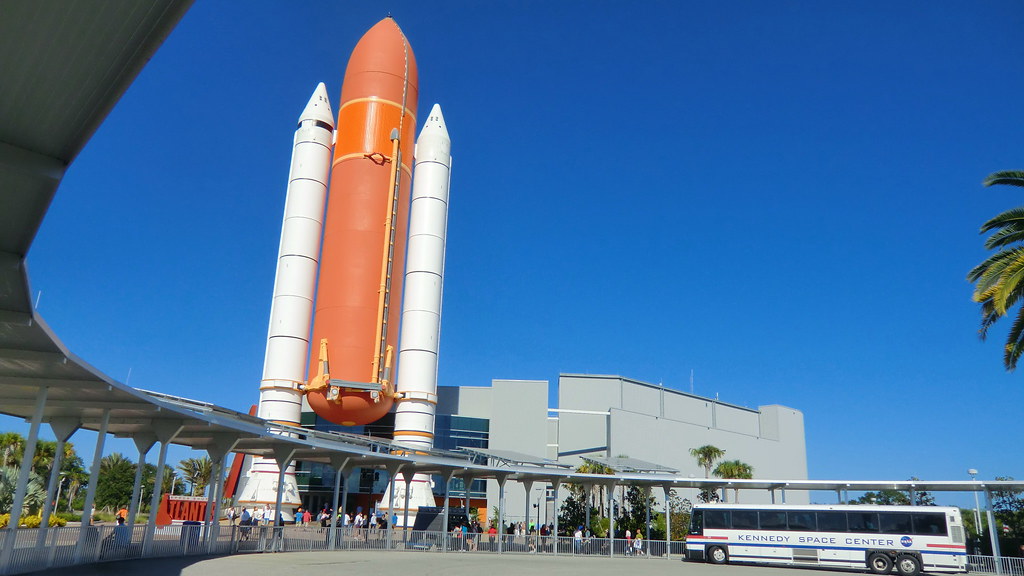
Kennedy Space centre
-
This is a full day activity. So save time book
online and go early in the morning.
-
Taking bus tour 1st is a good
option. So you will have enough time to explore more in Apollo/Saturn 5
centres.
-
Make sure you watch a space movie in IMAX
theatre.
-
Lots of interactive experiences in Atlantis
centre so reserve some time.
-
We travelled here during the visit for Disney World
and this facility is about an hour drive from Orlando.

Disclaimer
The above
comments are based on my personal travel experiences to this particular
location in summer months. Your experience may vary due to weather and traffic.
My trips were not
sponsored by any of the authorities and my comments are not biased or representing
any views of governing bodies.
History and
information extracted from Wikipedia and photos were selected from Google
images and all rights reserved with original owners.
This is only for
an informational purpose. Not for commercial use.
Note.
Hope
you will enjoy your visit. Please make your comments, suggestions & travel questions.
I am happy to provide information on my earliest convenience & update the
post accordingly.




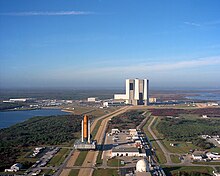
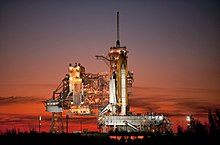

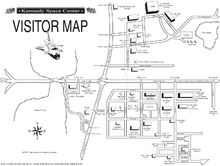

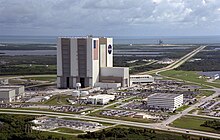
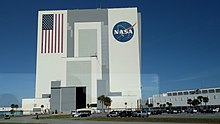
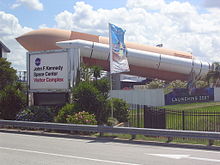
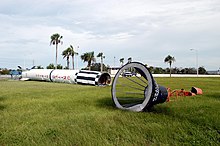
No comments:
Post a Comment